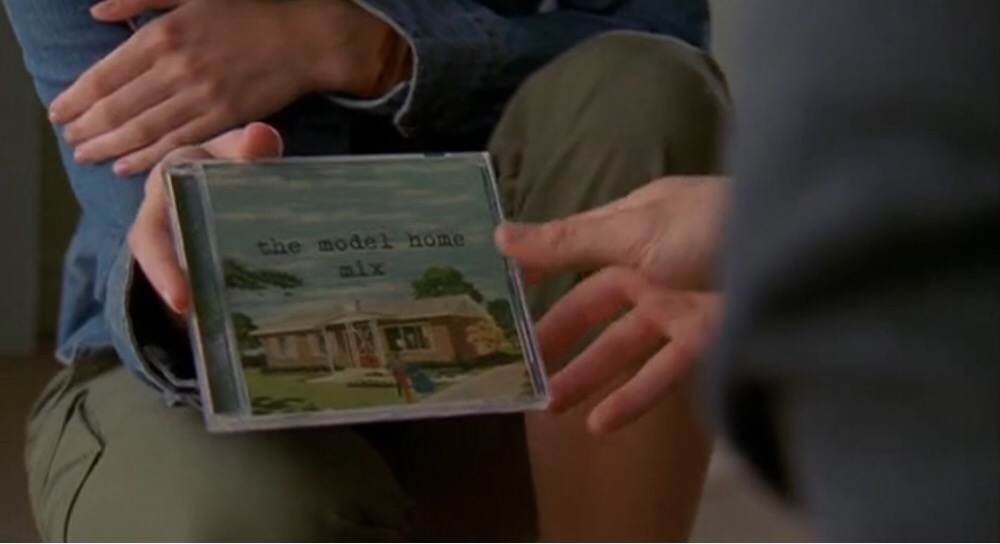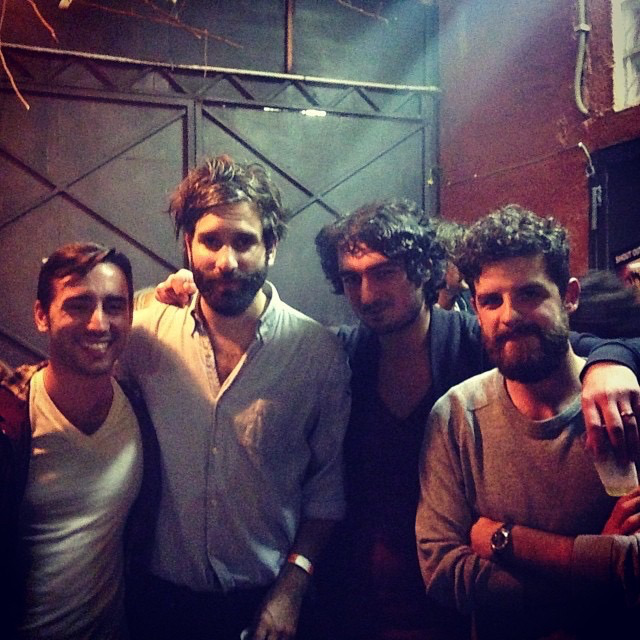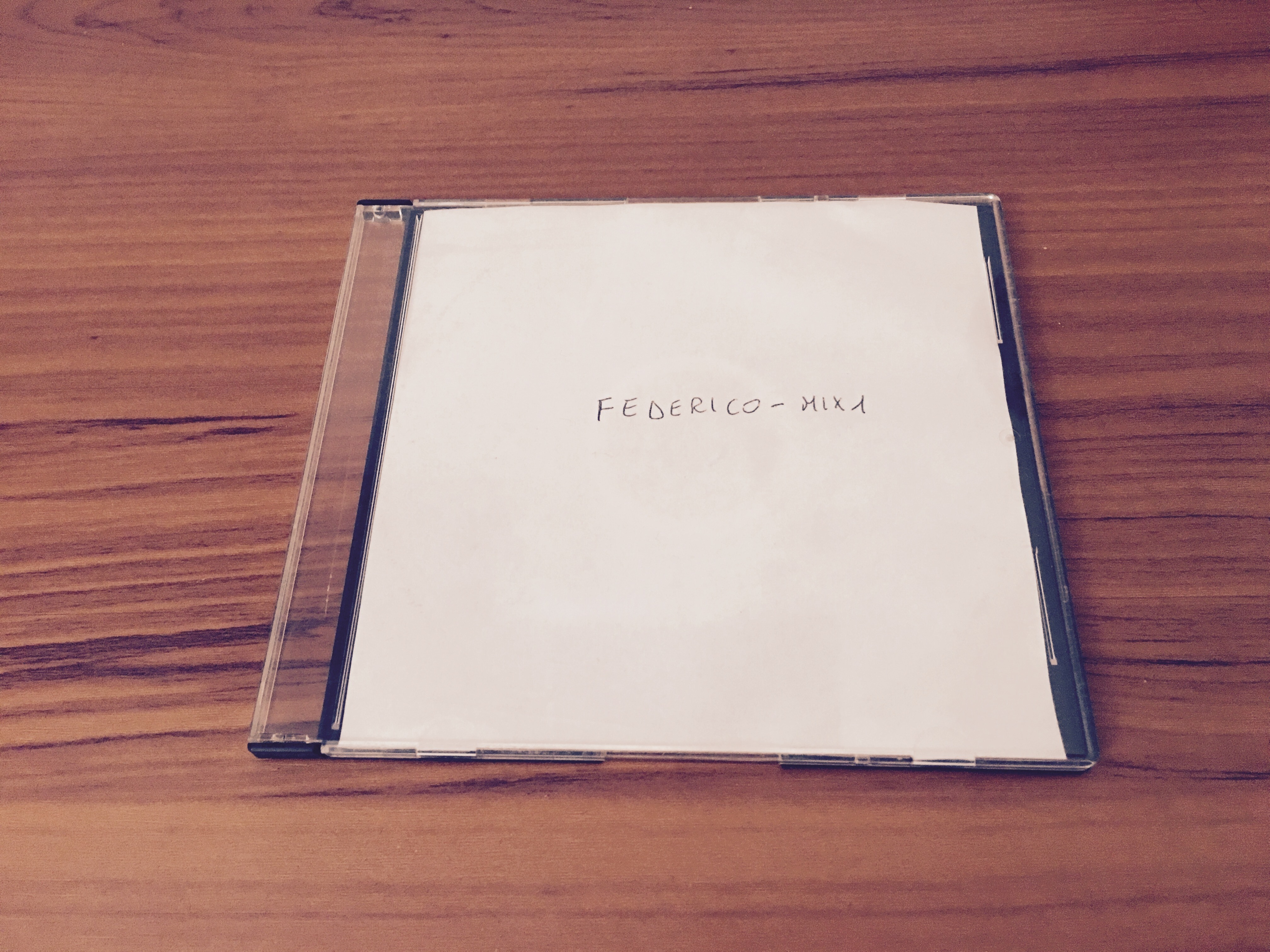I’ve always loved the idea of someone else making a mixtape for me.
When I was in middle school and until the first year of high school, we didn’t have the Internet at home. My parents were against buying me a PC; they thought it was a waste of time. Unlike many of my friends, I depended on books and magazines for my school research and hobbies. I was a voracious reader.
That was 2002. I wasn’t exactly a music fan back then: I heard music on the radio in my mom’s car on the way to school in the morning, and I occasionally slid my dad’s cassette tapes in our Siemens Club 793 stereo, but he only listened to Italian music. I wanted the English stuff.
Until one day my friend Luca told me about MP3s and compact discs with hundreds of songs on them. By leaving his computer plugged in all night, he explained elatedly, he could download any music he wanted from the Internet using programs with exotic names I had never heard – WinMX, eMule, iMesh. Then, all those songs could be “burned” onto a CD as MP3s, and I could play them back for as long as I wanted with a CD player.
I was 14, we were chatting after school, and I didn’t know what piracy was. And then, the surprise: because he knew I didn’t have the Internet (or a computer), he had made a sample CD for me with about 30 songs on it. He gave me the CD, told me to buy a CD player for myself, and he concluded with “Get back to me soon about the songs you like. I put in a bit of everything except Italian music”.
Fourteen years ago, I was handed the first mixtape someone ever made for me.
A few months later, Luca was burning a new CD for me every other week.
After listening to the first one for a few days, I got back to him and shared my impressions: I liked the mid-2000s punk rock and hip hop, didn’t care for the house and electronic stuff he put in, appreciated the alternative and rock classics (I knew some of them!), and I could have gone with less R&B. Luca listened, we talked, and he followed up with a second CD. It was clearly based on my feedback: he doubled down on OutKast and Blink-182, slipped in some old Green Day and Van Halen (I’m pretty sure that was my first encounter with When I Come Around and Panama), and there was no sign of Usher. I discovered Stan by Eminem and Dido on that second mix.
This went on for months. Listening to Luca’s CDs became a habit for me. I would listen as I perused his handwritten tracklists in the back of the CD covers. My mom would even ask me to “play Luca’s music”. I loaned a few of Luca’s CDs to my classmates. I believe that Luca kept doing it for a simple reason: he was (still is) a good friend and he thought it was cool that he could download music for free and burn an extra CD for me. Talking about new songs and old gems he included in his mixes was an excuse to catch a break between classes – no texting, no selfies, just two friends discussing songs on a mixtape.
By 2009, Luca and I had gone our separate ways. He was studying Economics in Rome. We texted occasionally. Meanwhile, I had somehow managed to apply for Philosophy, drop out after three months (most of them spent drinking and smoking with my roommates), get a job, be fired after 8 months, and start a blog about Apple.
I thought I was good at my new job, but I had no idea what I was doing. Still, I was resilient; I knew that was what I wanted to do. Plus, I had promised myself I’d never have a boss again. I was 21.
I don’t remember when or how I read about a Swedish company called Spotify. I think it was on a tech blog – or maybe a forum? The underlying idea immediately seemed like the future to me. I had bought an iPod Classic two years earlier (and eventually moved to an iPod touch and an iPhone, which is how I started MacStories), but the iPod and the iTunes Store came with the overhead of finding and managing music. There was no Luca making playlists for me. I ended up listening to the same music over and over out of laziness, and I wasn’t discovering anything new.
Thanks to a friend who lived in London, I managed to create a fake Spotify UK account and installed the app on my iPhone and MacBook Pro.
The feeling was exhilarating. It was like walking into my favorite record store – the place where I got my copies of Siamese Dream and Mellon Collie and the Infinite Sadness – without the constraint of time and money. Spotify could stream any album, any song, any playlist. It felt liberating. And, sure, some artists weren’t there and music wasn’t “mine” anymore, but it didn’t matter. Suddenly, any moment could be filled with music. Playlists by other users could bring back memories of songs I hadn’t heard in years.
My CDs and iTunes library had fought a good fight, but it was time for something better.
It’s 2012 and Brenda’s Got A Baby by 2Pac is playing on my iPhone 4S. “Thank God Apple isn’t making those giant Android phones”, I think to myself. I can’t use my right arm because I’m doing chemo and the IV machine is humming along, pumping a poisonous panacea that will save me into my veins. The iPhone 4S is small enough to be used with my left hand.
“Brenda’s Got A Baby” talks about terrible things and it’s arguably not 2Pac’s best work, but the beat and his delivery make it one of my favorite songs on this Greatest Hits. I can’t pinpoint why listening to 2Pac makes the chemo more tolerable, but it’s working.
I’ve been jumping between different music streaming services for a few years now. Spotify keeps getting more popular and there’s a rumor that Apple is also working on a streaming service, but I use Rdio now. Rdio looks great: the company’s designers care about music, and the service is full of details and smaller features that make streaming songs enjoyable. I like that I can view my History so I can see what I’ve been into lately. It seems like I listen to Oasis when I’m resting at home and 2Pac when I’m doing chemo at the hospital. That’s an odd pattern.
My favorite aspect of Rdio is the focus on people. Not only can I discover playlists by other users with a beautiful interface – I can also see what’s trending among my friends and what they’ve been listening to. I subscribe to a few playlists and I regularly discover new artists thanks to people I follow. It doesn’t feel like Luca’s mixtapes (remember those CDs? Things are so much better now), but it’s nice.
I used to care about owning albums. I sometimes miss that sense of music ownership, and I wonder if Rdio’s going to be around forever. I like this service because they seem to know what they’re doing.
The nurse notices my white iPhone and she tells about her “Galaxy iPhone” model. I think of the tech news I’m not covering. I need to get back to work.
I had big hopes for Apple Music. After years of trying streaming services (including a stint with Google Play Music), I was certain human curation was the key element missing from the music ecosystem. With Beats Music and Iovine, Dre, and Reznor on board, I thought Apple had a good shot at building the ideal music service for me.
Apple Music launched on June 30, 2015, and I signed up right away. I didn’t particularly care for the confused WWDC announcement, the buggy interface, or the problematic integration with existing iTunes libraries. I had been searching and streaming music for years at that point, so I wasn’t “organizing” my music library at all. Apple Music wasn’t the company’s smoothest launch, but, as someone who only cared about streaming, it was alright.
I used Apple Music heavily for eight months. The novelty of Beats 1 wore off quickly, and the app’s inconsistencies continued to pile up. It got the job done, though. It wasn’t spectacular in any way, but at least a lot of music was available on it and the family plan was cheap.
I gradually realized, however, that I wasn’t using Apple Music with the same curiosity and sense of wonder I had felt with other services in the past. Apple Music was okay, and it had a few interesting exclusives, but I also found it unsurprising and stale.
The ‘For You’ section – the feature I was hoping would reinvent music discovery with a mix of algorithms and human curation – turned out to be uninspired at best. No matter how much I tuned it to my preferences, the section consistently served up the same menu of albums I already knew, ‘Intro To’ playlists filled with hits I had listened to hundreds of times, and artists I had known for years. The same curated sections popped up weekly without changes.
I wasn’t discovering anything new on Apple Music. There was no obscure indie artist I had never heard about and no curveball thrown at me. There was no sass.
I guess that For You is fine for someone who’s grown tired of discovering unknown artists every week, but it’s not what I’m looking for. Apple Music’s For You section is, for me, the musical equivalent of comfort food.
Spotify’s Discover Weekly, on the other hand, has brought back the edge I was missing from music streaming services. Discover Weekly is helping me find new music like I haven’t done in years. Every Monday, I feel like I’m back in high school and staring at the handwritten back of a mixtape cover. I crave its sense of discovery.
I tried Spotify again in January. I like to challenge my preconceptions and take a tour of products I’m no longer using to know how they’re doing. I had seen a few close friends praise Discover Weekly – a feature Spotify launched in 2015 – and I thought the details of how it worked were fascinating.
It took a couple of weeks for Discover Weekly to figure me out, but once it showed up, it was unlike anything I had tried in streaming services before. Discover Weekly seemed to know my preferences and idiosyncrasies. Right off the bat, it guessed it could mix Let’s Talk About Your Hair by Have Mercy (which I had never heard) with Make You Smile by +44 and that I would appreciate the contrast between them. Discover Weekly is the kind of feature that brings up Fight Song by The Appleseed Cast and The Girl by City and Colour like a good friend who’s not afraid to put wildly different songs on the same mixtape because he knows you’re going to love them.
There were some misses, of course, and a few curveballs – but that’s what you get with a mixtape. And when it works, those imperfections are offset by the rush of a single song that makes everything right. It’s hard to reconcile this with words. Most recommendation features on other music services are built for reassuring coziness. Discover Weekly dares the unknown.
And that’s quite the paradox, isn’t it? In my experience with Discover Weekly, Spotify’s feature has taken more risks with unfamiliar gems than every playlist from expert curators I was shown in Apple Music. It’s funny – and ironic – how an algorithm alone can understand this better than a team of people. With all the talk on AI and machine learning that’s been going on lately, this is something worth keeping in mind.
In three months of Discover Weekly, I’ve discovered more new artists than I did in years of streaming services, including Apple Music. None of the artists I discovered with Spotify’s mixtapes were ever recommended to me by Apple Music. They might as well not have existed.
Discover Weekly brings joy into my life. I look forward to every Monday now.
There’s an idea that has stuck with me since I was in middle school – music creates connections.
My old music teacher, Claudio, often refused to let us play the flute in class as other teachers in the same school did. Instead, he asked us to think of a song together as a group and recreate it with everyday objects around us – pens, pencils, cans, paper sheets, shoes, anything. Some kids didn’t like the idea and their parents complained to the school.
I loved it.
The idea was, when you create a connection between people and connections between objects and melodies, you can make music with anything and anyone. His lesson for us wasn’t to play a flute that we had been told to buy – he was trying to say that there’s music everywhere and in every one of us if we allow ourselves to go look for it. There can be always music.
Claudio was an odd guy like that. I saw him as a rebel. He loved to travel and he often brought photographs of his trips for us to see – the solitary beauty of Africa, the majesty of Machu Picchu, fishing in Cambodia.
I was in shock for days after he was shot and died in Honduras because he tried to stop a robbery. And yet, somehow, that made sense as his way to go out. A weird hero who made music with pens. That was the first funeral I ever went to.
I miss him.
It’s October 2013 and Shout Out Louds have just finished playing at the Circolo degli Artisti in Rome. I’m chatting with my friends outside. The band comes out the backstage door and it seems like nobody is paying attention to them. Perhaps it’s the drinks doing the job for us, but we walk up to them and say hi.
They’re kind and genuine like you would expect from their songs. The singer, Adam, is fun and cordial. A few minutes pass, we’re talking, drinking, laughing – I can’t believe I’m actually talking with one of the bands I discovered thanks to The O.C. – but it’s happening.
I was obsessed with The O.C. when I was in high school. It wasn’t for the story (however captivating, still consistent with the cliches of mid-2000s teen dramas), or the California setting – it was the music. Alex Patsavas – music supervisor on The O.C. and several other shows – is responsible for introducing me and millions of other teenagers at the time to bands such as Death Cab for Cutie, Modest Mouse, Shout Out Louds, The Shins, and Rooney. In a way, every episode of The O.C. was a mixtape with a story.
Some of my friends are embarrassed to admit they first heard those bands on a teen show. But I’m not. I don’t have to pretend I’m more sophisticated than I am. Music is music. It’s everywhere, and it doesn’t matter where it comes from.
And eventually it just comes out. “Hey man, you know I first heard one of your songs on The O.C. years ago?”
It was Go Sadness.
My friends give me the look. They had told me before the show not to bring that up because, according to them, bands don’t like being associated with it. What if they had a point? But what if they didn’t? I don’t care.
Adam looks at me and smiles. “And here we are now”, he says.
Discover Weekly makes me feel younger. It takes me back to the days of Luca’s mixtapes. To a time when I was anticipating each episode of The O.C. for its music. Simpler times, when weeks were punctuated by new songs I fell in love with.
There are often songs I don’t like in Discover Weekly. It’s not perfect. It’s not made by people – an algorithm is behind it. But it doesn’t matter. Luca’s mixtapes weren’t perfect; the “music” we played with pens and cans was a cacophony of tempos; the albums my friends used to listen to in Rdio didn’t always match my taste. The point isn’t the hand behind a collection of songs. The curator – be it a friend, a TV show supervisor, a journalist, or a computer – isn’t the protagonist of a mixtape.
Discovery takes the stage. What matters is what you feel in that moment when a song that is just right comes on and punches you in the stomach. Excitement. The beautiful ache of not knowing. You turn the volume up. A single connection that branches in different directions. You hit repeat. It stays with you forever.
My CD collection at my parents’ house is a bit dusty. A nondescript white case stands out among Led Zeppelin, Smashing Pumpkins, and Oasis. I pick it up. Scribbled on the cover, still readable after 14 years, it says “Federico – Mix 1”.
I’ve always loved mixtapes.




